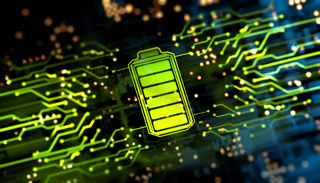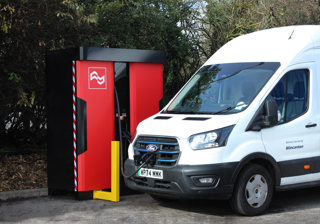By Maria Bengtsson, electric vehicle lead at EY UK
With another six-and-a-half years to go before the UK’s ban on the sale of internal combustion engine (ICE) vehicles comes into play, many businesses and fleet operators may still be viewing their deadline for making a change to their fleet as distant.
However, six-and-a-half years is typically the equivalent of only one, or potentially two cycles in terms of fleet replacement. Indeed, the clock is beginning to tick for businesses to make their fleet operations more sustainable in an efficient and timely manner.
But, in the here and now, businesses looking to take proactive steps to transform and electrify their fleets still have time on their side. If a business wants to be ahead of the change in legislation, and have a fully-compliant and operational fleet in place ahead of the 2030 ICE sales ban, now would be a good time to start taking positive, early steps to maximise the chances of a smooth and efficient transition.
Why you shouldn’t delay your fleet electrification plans
If you decide to delay your fleet electrification as a business, there are a range of significant challenges and difficulties you could run into. Businesses should carefully consider lead times and how they will likely affect the procurement and implementation of a new fleet for example.
Careful forward-planning as early as possible is advisable, as situations in which you are forced to change your fleet out of cycle and exit contracts early could end up being significantly more expensive for the business. Putting in place intended timelines that consider the complexity and time involved with fleet electrification can avoid such situations, and ultimately set businesses up for a smoother, and cheaper, fleet transition.
Be realistic about the challenges and ask yourself better questions
Infrastructure is a key challenge for fleet electrification, and businesses should ask themselves a range of questions and create a plan of action around how they can answer them. For example, what are our fleet charging requirements and how can we sort them? How expensive will this be, and can we spread the cost over time? How can we avoid a situation in which we need to rush our transition and incur additional costs around the time of the ICE sales ban? How are we going to use our fleet going forward? Where do our Electric Vehicles (EVs) need to be stationed? Can we deploy our fleets on other jobs?
A key example of an infrastructure challenge businesses could face is the need for enhanced grid capacity if they’re using a depot to charge their vehicles – something that is currently a clear bottleneck – with businesses waiting up to 24 months to get from application to having their desired additional grid capacity in place. Again, if businesses don’t actively seek to avoid such challenges now, they could find themselves in a position where their options are fewer later down the line, and they could risk wasting assets and capital.
With a deeper focus on electricity, there are further questions that must be answered. For example, how are you going to be exposed to new electricity costs and uncertainties attached to electric fleets? Do you procure energy directly? Do you put solar in place? Do you start generating some of that power or energy yourselves? Or do you outsource and let somebody else manage your energy?
You might think it goes without saying, but people are also extremely important for fleet electrification. Businesses need the right people in place to facilitate fleet electrification. People also need to understand how you operate, manage and maintain EVs effectively and efficiently, so potential additional recruitment and training must also be considered.
An opportunity to secure a competitive advantage
For many people, fleet electrification is mainly regarded as a problem. However, if you are strategic and prepared, it could represent a huge opportunity, especially from an operational cost point of view.
For example, if they manage their energy well, businesses could potentially shield themselves from high energy prices and save themselves significant sums of capital by using batteries as energy assets.
From an efficiency perspective, EVs have the capability to store a range of data that can inform a business on things like the performance and economy of its fleet. Therefore, there is also ample opportunity to ensure that your assets are working harder and more efficiently for you by utilising data gathered through an electrified fleet.
With a sharper focus on competitive advantage, businesses may find that there are requirements for sustainable and/or decarbonised transport when bidding for work. Instances like these are prime examples of how having an electrified fleet can give you the edge over competitors. There are also regulations that businesses must comply with, including zero-emissions zones. Again, an electrified fleet can help to alleviate those challenges and keep costs down and reputations positive.
This is more than swapping ICE vehicles for EVs
Businesses should try to avoid thinking of this as simply swapping ICE vehicles for EVs – there’s much more to the transition than that. This is like going back to the drawing board and asking critical, complex questions.
Granted, getting the right answers and applying that knowledge can take time, but seeking the right advice and answers, and doing so early, will likely set businesses up for the best chances of success.



















Login to comment
Comments
No comments have been made yet.